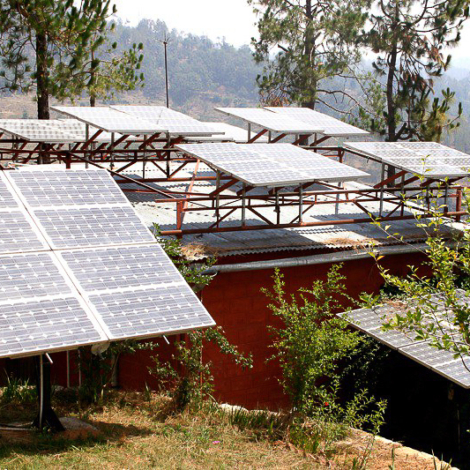There is a shift underway among crowdfunding enterprises that invest in energy access-related startups and projects, according to a new report by Energy 4 Impact, Mercy Corps’ energy platform. The data suggest two broad trends: debt platforms, which dominate the market, are reducing investments in pay-as-you-go (PAYGo) solar home system providers, many of which have become non-performing loans that are unlikely to be repaid in full. Instead, platforms are diversifying their portfolios, and leaning into investments in larger commercial and industrial solar projects, as well as other sectors such as e-mobility and clean cooking.
Compare solar home systems in E4C’s Solutions Library
To understand what the shift could mean to energy access startups, Engineering for Change spoke to financial innovation specialist Davinia Cogan, a co-author of the report and Program Manager at Energy 4 Impact.
E4C: $49 million was raised for energy access companies on crowdfunding platforms in 2023. Why was less money raised than in years past?
DC: There was a 12 percent drop in 2023, which is largely explained by the fall in equity crowdfunding activity. Equity crowdfunding is quite volatile and typically accounts for 2 percent to 10 percent of total volumes with debt crowdfunding making up the remainder. In 2023, only $1 million of equity funding was raised, while the previous year saw $6 million raised. Interestingly, debt crowdfunding volumes have held steady over the last 5 years, raising an average of $50 million each year for energy access companies operating in Africa, Asia and Latin America.
E4C: The report suggests the energy access crowdfunding landscape is shifting. Which of the trends matter most to energy startups in low-income and underserved communities?
DC: In the past, debt platforms had concentrated on borrowers selling solar home systems on a PAYGo basis. Lenders are now more trepidatious when it comes to lending to PAYGo companies. We’ve seen a few platforms reduce their exposure to the PAYGo model and pivot towards commercial and industrial (C&I) scale solar. We are also seeing platforms diversify into new sectors, such as cooling, clean cooking and e-mobility. This may mean that more diverse business models get a shot on some debt crowdfunding platforms.
E4C: Is there a strategy that energy startups might adopt in response to platforms being more cautious when lending to companies operating a PAYGo model?
DC: Companies must focus on portfolio quality if they aim to raise receivables financing on debt platforms. Prior to the pandemic, most of the emphasis was on portfolio growth, often at the expense of credit quality. Now there is much more emphasis on sustainable growth, and ensuring that growth doesn’t come at the expense of portfolio quality.
For companies either setting up a customer lending program or aiming to improve portfolio quality, they can track portfolio health metrics such as the collection rate, receivables at risk (RAR) and write-offs (see PAYGo Perform KPIs). Companies should also look at how frequently the product has been used in the first three months after the sale as customers with low product usage may end up being non-performing loans.
It might also be a good idea to tie sales agent compensation to loan performance to incentivize sales to customers who can meet the loan terms. Another way to proactively keep on top of your loan portfolio is to track the Customer Challenge Rate (see 60 Decibels Core Insights) as this can also impact repayments, as well as referrals which lead to long-term growth.
[Editor’s note: Davinia Cogan adds that trends not mentioned here include the shifting macroeconomic environment, especially the increase of interest rates, and the onboarding of institutional investors. For a more detailed response please see the full report.]

